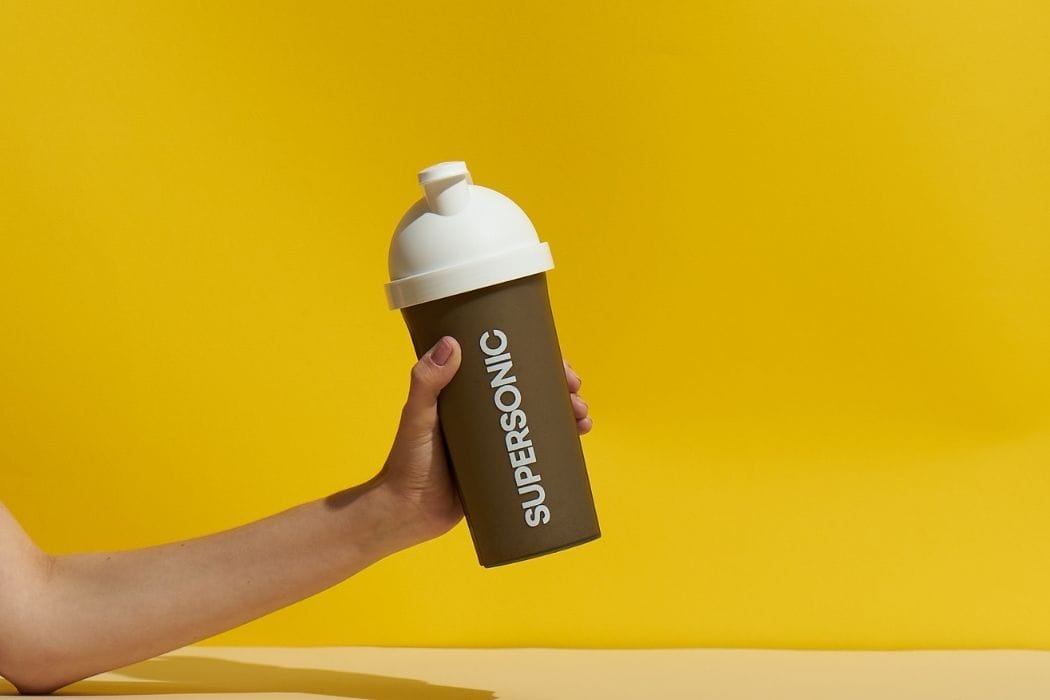Meal replacements are created to provide consumers with quick and easily prepared products that are economically affordable and nutritionally balanced. In this article, we will compare two products – SUPERSONIC Food and Herbalife – taking into account their composition and nutritional values, since these are the distinctions we are able to evaluate objectively. The final purchase decision will be up to you, but we are convinced that SUPERSONIC Food is the one with the most interesting and richest composition of all the products available on the market.
Summary
- SUPERSONIC Food contains 91% less simple sugars than Herbalife.
- SUPERSONIC Food contains 4 sources of plant protein and it’s suitable for vegans, while Herbalife is not a vegan product as it is based on milk and soya proteins.
- SUPERSONIC Food provides omega 3-6-9 fatty acids in an unprocessed and liquid form, Herbalife recommends preparing the shake with cow’s milk as the source of fats.
- The SUPERSONIC Food formula has been developed by scientists and nutritionists.
Protein
Herbalife, unlike SUPERSONIC Food, is not a vegan product as it is based on a combination of casein proteins derived from cow’s milk and a soya protein isolate. Given the number of alternatives available on the market, it is not necessary for people who want a wholesome protein supply in their diet to consume animal products. SUPERSONIC Food, by mixing together 4 different proteins –- pea, rice, pumpkin and hemp – has a complete amino acid profile, meaning that it provides all the essential amino acids required for good health.
Carbohydrates
The sources of complex carbohydrates in SUPERSONIC Food are oatmeal and linseed. Oatmeal has a low glycaemic index and high fibre content, which comes in the form of beta-glucan, particularly valuable for health. It lowers total cholesterol, LDL cholesterol and triglycerides, and also normalizes blood sugar levels. Linseed is rich in complex carbohydrates and fibre and is also a source of omega-3 fatty acids (mainly alpha-linolenic acid).
100 g of SUPERSONIC Food provides 30 g of carbohydrates, of which only 3 g are simple sugars (which covers only 3% of the daily requirement for sugars). In the same serving, a Herbalife shake provides 52 g of carbohydrates (45% more than SUPERSONIC Food), including as much as 36 g of simple sugars (91% more than SUPERSONIC Food). The intake of simple sugars should be as low as possible, as their excessive consumption increases the risk of diseases such as type II diabetes, insulin resistance, obesity and metabolic syndrome (1).
Fats
One serving of Herbalife shake (26 g of powder) provides 1.04 g of fat, which is 1.5% of the daily requirement for this nutrient. This is a very small amount, especially as the same amount of product contains as much as 9 g of sugar. Fat is the macronutrient with the highest energy value (9 kcal in 1 g, while proteins and carbohydrates provide 4 kcal in 1 g), which doesn’t mean that it should be excluded from any diet, even a reduction one. A healthy, balanced diet should be based on energy coming from all three macronutrients in the right proportions – just as it is in SUPERSONIC Food, where there are adequate amounts of fats, proteins and carbohydrates, and none of the ingredients are present in too small quantities. Fat is an essential component of a diet because it has many important functions in the body. It’s involved in the production of many biologically active substances, e.g. leptin (responsible for regulating appetite) and adiponectin (associated with the sensitivity of liver and muscle cells to insulin). Fat is particularly important for the nervous system and its proper functioning, as it makes up around 50-60% of its mass, including the brain.
Vitamins and minerals
The SUPERSONIC Food formula has been developed to ensure that as many minerals and vitamins as possible come naturally from the source ingredients – for this reason, the product is enriched with superfoods and plant extracts, for example, bladderwrack which is a source of iodine and rosehip extract as a source of vitamin C.
These minerals and vitamins that the product has been enriched with are in chemical forms that are best absorbed by the body – for example, vitamin B12 is in the form of methylcobalamin, which has a much higher absorption rate than the cyanocobalamin found in Herbalife.
In addition, SUPERSONIC Food contains fat-soluble vitamins (A, D, E, K), which are found in the product in combination with fatty acid esters in separate sachets, not in a powdered form. As a result, they are protected from the damaging effects of oxygen and light and are better absorbed by the body due to their presence together with fats.
Unique ingredients
The SUPERSONIC Food formula contains many bioactive ingredients that have a beneficial effect on health. These include lycopene, which has a powerful antioxidant effect (2), lutein and zeaxanthin, which are responsible for the proper functioning of the sight organ (3), as well as choline, which among other things contributes to proper muscle function while also supporting the nervous system and brain functioning (4).
As the only meal replacement, SUPERSONIC Food contains inactive yeast Yarrowia lipolytic which belong to the category of the so-called Novel Food. They are a source of ingredients valuable to health, providing among other vitamins C, D and E as well as B-group vitamins. They also contain bioactive compounds, such as coenzyme Q10, alpha-ketoglutarate and citrulline malate, as well as beta-glucan, which has anticancer and immune-stimulating effects (5).
Conclusions
SUPERSONIC Food and Herbalife offer products that are based on similar principles, but nonetheless are very different. In addition to differences in composition and nutritional values, the products are also geared towards different audiences: SUPERSONIC Food is vegan, while Herbalife can’t be consumed by people on a plant-based diet. The SUPERSONIC Food formula is carefully composed by scientists and nutritionists, with each ingredient supporting our health and well-being.
Bibliography
- Brand-Miller, J. C., Holt, S. H., Pawlak, D. B., & McMillan, J. (2002). Glycemic index and obesity. The American journal of clinical nutrition, 76(1), 281S-285S.
- Heber, D., & Lu, Q. Y. (2002). Overview of mechanisms of action of lycopene. Experimental biology and medicine, 227(10), 920-923.
- Roberts, R. L., Green, J., & Lewis, B. (2009). Lutein and zeaxanthin in eye and skin health. Clinics in Dermatology, 27 (2), 195-201.
- Zeisel, S. H. (2000). Choline: an essential nutrient for humans. Nutrition.
- Stier, H., Ebbeskotte, V., & Gruenwald, J. (2014). Immune-modulatory effects of dietary Yeast Beta-1, 3/1, 6-D-glucan. Nutrition journal, 13(1), 1-9.;]
- https://alfafit.pl/Herbalife-Formula-1-Koktajl-odzywczy-Shake-mix-nutritiv-sklad.html [Access date: 03.08.2021]
- https://supersonicfood.com/produkt/powder/ [Access date: 03.08.2021]











